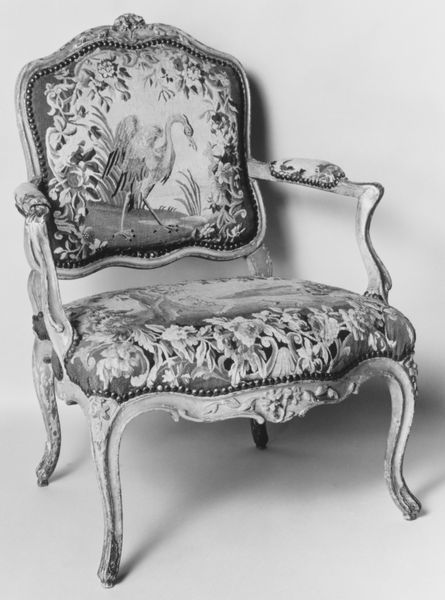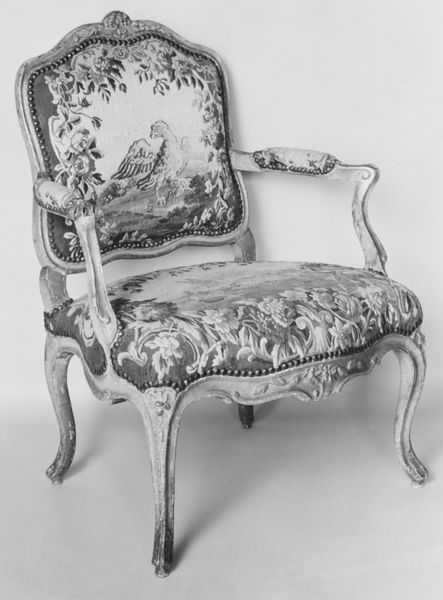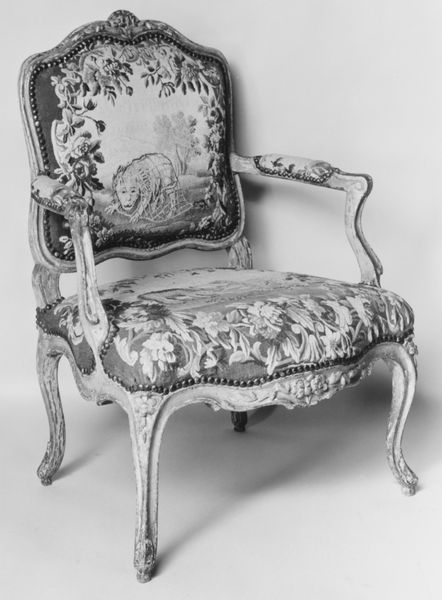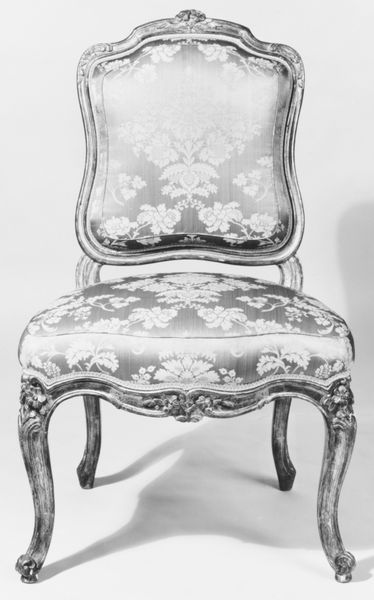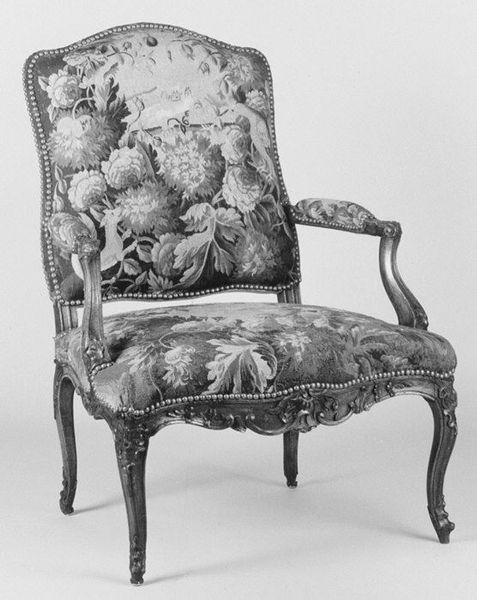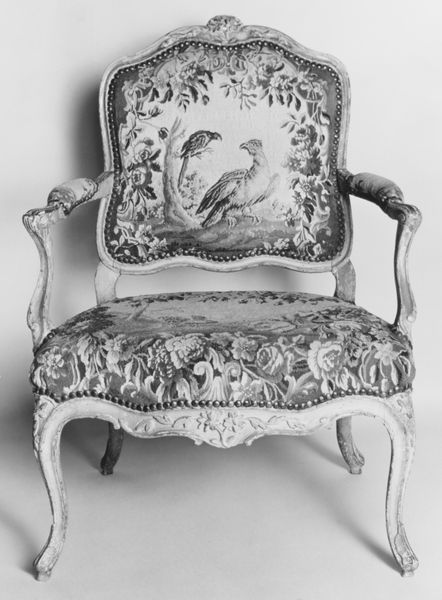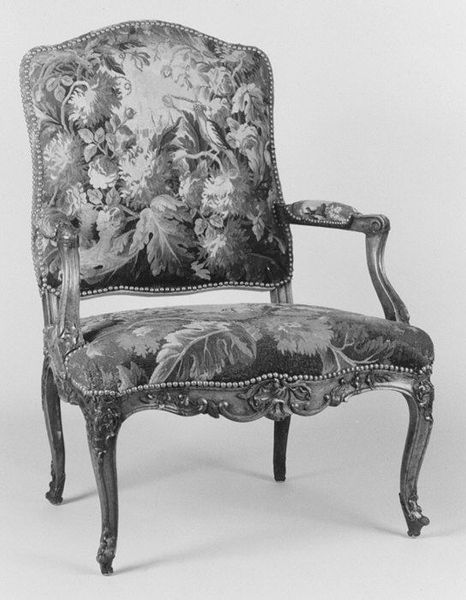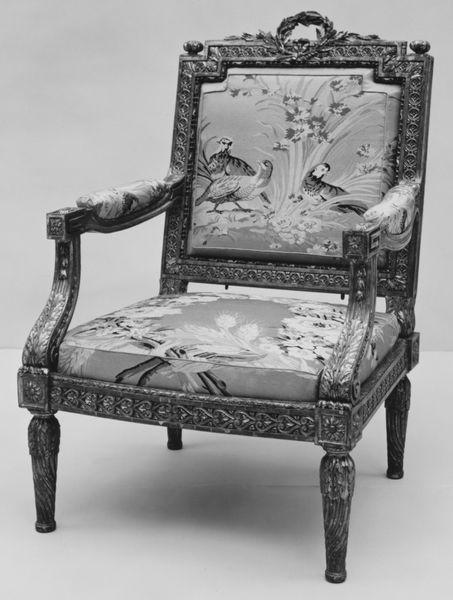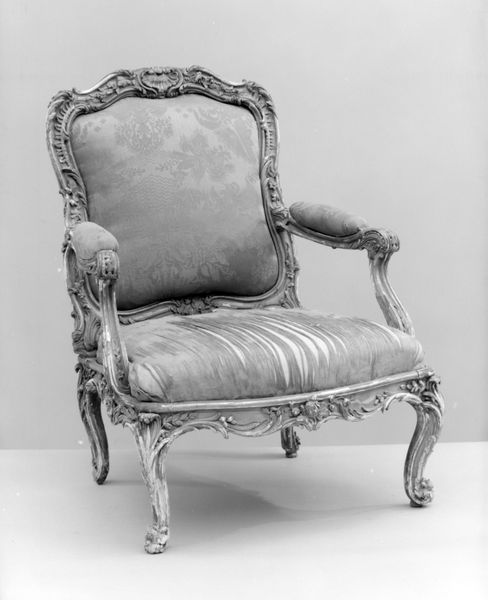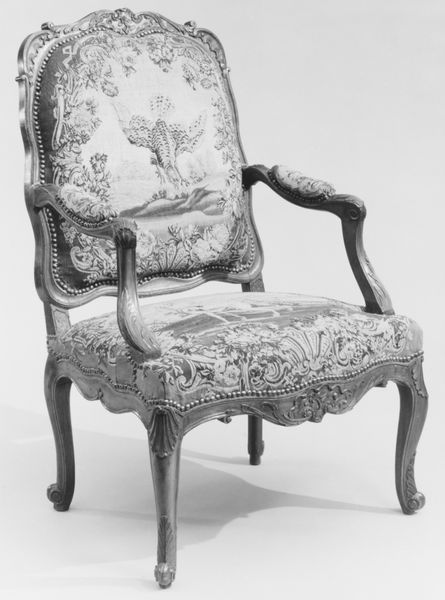
weaving, textile, sculpture, wood
#
wood texture
#
baroque
#
sculpture
#
weaving
#
furniture
#
textile
#
sculpture
#
wood
#
decorative-art
#
rococo
Dimensions: Overall: 37 7/8 × 29 1/4 × 22 in. (96.2 × 74.3 × 55.9 cm)
Copyright: Public Domain
Curator: Before us, we have an armchair, one of a set of nine, made in Aubusson between 1730 and 1765. The piece blends wood and textile elements, a beautiful demonstration of Rococo style. Editor: Immediately, I am struck by the interplay of rigidity and softness, hard carving versus floral exuberance; this chair feels very much of its era but almost frozen in time, a tableau for a bygone era of aristocratic ease. Curator: That's a sharp observation. It represents more than just a seat, it showcases the convergence of various skilled crafts. Consider the labour invested – the carver who shaped the wood, probably linden or beech, into those elegant, sinuous lines. Then there's the weaver, meticulously crafting the tapestry with its floral patterns. Editor: Absolutely. That tapestry, look closely: we see a central image on the chair back, of a proud rooster set within an elaborate botanical frame. Roosters, often associated with vigilance, courage, and even lust... What resonances did these hold for the original owner, and the class they represented? Were they declarations of virility, rural peace, or something else entirely? Curator: Interesting point about the rooster’s symbolism. The chair's value also resides in its commodification of nature, right? It's bringing pastoral themes indoors, into the refined, almost artificial environment of the aristocracy, illustrating a controlled, curated vision of the natural world. The quality of execution elevates utilitarian object into a collectible one. Editor: The control feels significant here; these images speak of power, but also perhaps a yearning for something more grounded amidst the formal constraints of court life. Curator: Precisely. It reflects a deep involvement with craft traditions – and the seat represents a social hierarchy made solid and tangible through skilled labour. Editor: It gives us a visual echo of stories that have unfolded across its surface and continue in the cultural memory, doesn't it? Curator: I agree. These chairs reflect the labour, the era, and perhaps even the anxieties embedded within these crafted materials. Editor: Ultimately, this armchair invites reflection on history, art, and the enduring human fascination with imagery.
Comments
No comments
Be the first to comment and join the conversation on the ultimate creative platform.

